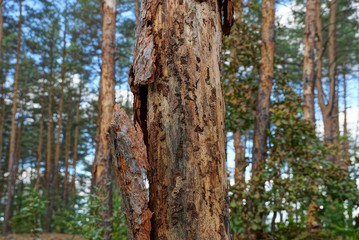When it comes to tree diseases, prevention is better than cure. This is not a saying that applies only to tree diseases but also to man-made errors that contribute to the destruction of trees. A few common mistakes are often made when it comes to tree care, which leads to tree diseases being more widespread and thus more serious. Prevention is therefore better than cure; it is, in fact, the mantra of the modern, intelligent tree surgeon. Let’s take a look at some common mistakes that could end up killing your tree.

One of the most common mistakes when it comes to tree diseases is cutting too short. It may seem like a logical approach after you have already tended to the wound and let it heal. But this is one thing that many surgeons do, and they are not doing the job for the tree. In fact, cutting short a wound with too much pressure can result in secondary infection and further damage. You may end up doing more harm than good.
Another common mistake in tree diseases treatment is failing to treat the symptoms. In many cases, the tree is left untreated until the affected portion starts drying out. Only when this happens will the disease be discovered. If you are treating the tree yourself, you need to be more cognizant of the symptoms. Once you notice any sign, get on top of it before the tree dries out completely.
Another big mistake is ignoring signals from the ground. For example, if you are using an insecticide to kill termites, do not ignore the signal given by the soil. Termite treatment is easy. Just scoop up the insecticide into a bucket and dispose of it.
And one of the biggest mistakes in tree diseases treatment is thinking that symptoms won’t manifest until much later. The truth is, sometimes the tree simply dies before you’ll even know that there’s a problem. If left unchecked, severe tree diseases can lead to fatalities.
Another big mistake is using traditional methods for tree disease treatment. Often, homeowners resort to using pesticides and insecticides even when treatment methods like soil fumigation and root injection are more effective. There are health concerns involved with these toxic chemicals. For one thing, some of the pesticides are suspected of causing cancer. While it’s true that some tree diseases can be treated by chemicals, it’s also true that chemical treatments have a high incidence of unintended side effects.
And then there’s tree felling. Sometimes people mistakenly think that when they trim a tree, they’re preventing further infection. But in fact, tree felling can lead to infections. Also, trees are considered hazardous waste and are removed because they are dangerous to look at. If you want to beautify your yard or make it more appealing, you might think about not destroying trees.
As you can see, there are plenty of tree disease treatments out there. You just need to know what you’re doing. Prevention is better than cure, as the saying goes. So be careful about the trees in your yard. If you get in the habit of trimming them regularly and of thinking about tree diseases in terms of prevention, you will be able to enjoy all the wonderful qualities that trees offer, without the dread that accompanies any disease.
What types of tree diseases are there to treat? Well, you probably already know that most of them can be treated with natural tree disease treatments, like insecticide spray. But some tree diseases don’t have natural cures. Some of them, like black spots, may be treated with chemicals. However, it’s a good idea to talk to an expert before you do anything, especially if you have young children.
Black spots aren’t a common tree disease but it is a serious threat to your tree. It’s an infection caused by a fungus that feeds on the sap of trees. The fungus releases toxic spores into the air when it’s time to sap. If the spores are inhaled, they can lodge in your lung tissues and cause symptoms like coughing, wheezing, and chest pain. If left untreated, it can even spread to your heart.
Another common tree disease treatment is called fungizone. This is a natural substance that helps kill bacteria and fungi. It can also prevent other infections from spreading through the affected tree. It’s a great way to avoid the risks of heart tree disease.
